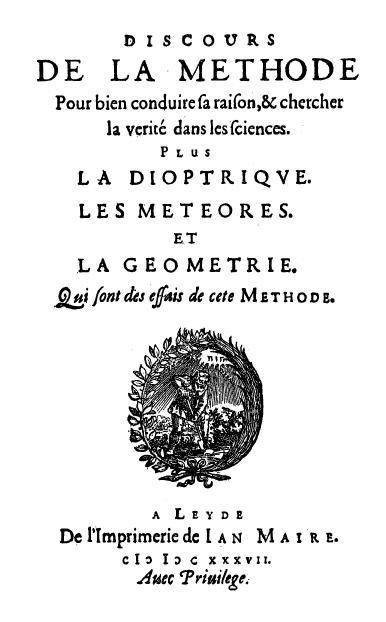
マービン・ミンスキー
『こころの社会』

「心の能力は3つ、すなわち認識能力、快 不快の感情、欲求の能力だからである」——カントのラインホルト宛書簡1787年12月28-29日 (X. 514)(出典、小田部 2020:42)
マービン・ミンスキーによる心の定義「ひ とつひとつは心を持たない小さなエージェントたちが集まってできた社会」(ミンスキー『心の社会』 1990年[原著:1986])
The Society of Mind, by Marvin Minsky
「心 の社会とは、1986年に出版された本のタイトルであり、マーヴィン・ミンスキーが提唱した自然知能理論の名称でもある[1]/ 同名の本の中でミンスキーは、エージェントと呼ばれる単純な部品の相互作用から人間 の知能のモデルを段階的に構築し、それ自体は心がない状態(mindless)であることを述べてい る。彼は、仮定された相互作用が「心の社会」を構成していると説明し、それがタイトルの由来となっている[2]... ミンスキーは、1970年代前半にシーモア・パパートとともにこの理論の展開を始めた。ミンスキーは、この理論に関する最大のアイデアソースは、ロボット アーム、ビデオカメラ、コンピュータを使い、子供用のブロックで組み立てる機械を作ろうとしたことにあると述べている[3]...ミンスキー哲学の中核と なる考え方は、「心は脳がすること」だとするものである。心の社会理論では、人間の心やその他の自然に進化した認知システムを、エージェントと呼ばれる個 々に単純なプロセスの広大な社会として捉えている。これらのプロセスは、心を構築する基本的な思考実体であり、我々が心に帰する多くの能力を共に生み出 す。心を、基本原理や単純な形式的システムの結果ではなく、エージェントの社会として捉えることの大きな力は、異なるエージェントが、異なる目的、知識の 表現方法、結果の生成方法を持つ異なるタイプのプロセスに基づくことができることである」。- The Society of Mind.
☆この本は、30の一般的な章に分けられ た270の独立したエッセイで構成されている。心の社会を説明する過程で、ミンスキーは幅広いアイデアや概念を紹介している。言語、記憶、学習などのプロ セスがどのように機能するのかについての理論を 展開し、意識、自己意識、自由意志などの概念もカバーしている。そのため、多くの人々は『心の社会』を哲学の著作と見なしている(→「アクターネットワークセオリー」)。
| Prologue 1Building Blocks 1.1The Agents Of The Mind 1.2The Mind And The Brain 1.3 The Society Of Mind 1.4The World Of Blocks 1.5 [Common sense?] 2 Wholes And Parts 2.1Components And Connections 2.2Novelists And Reductionists 2.3Parts And Wholes 2.4Holes And Parts 2.5Easy Things Are Hard 2.6Confusion 2.7Are People Machines? 3 Conflict And Compromise 3.1Conflict 3.2Noncompromise 3.3 Hierarchies 3.4 Anti-Heterarchies 3.5Destructiveness 3.6Pain And Pleasure Simplified 4 The Self 4.1The Self 4.2One Self Or Many? 4.3 The Soul 4.4The Conservative Self 4.5Exploitation 4.6Self-Control 4.7Long-Range Plans 4.8Ideals 5 Individuality (翻訳は個性と訳されているが個体性が正しい) 5.1Circular Causality 5.2Unanswerable Questions 5.3The Remote-Control Self 5.4Personal Identity 5.5Fashion And Style 5.6Traits 5.7Permanent Identity 6 Insight And Introspection 6.1Consciousness 6.2Signals And Signs 6.3Thought-Experiments 6.4B-Brains 6.5Frozen Reflection 6.6Momentary Mental Time 6.7The Causal Now 6.8Thinking Without Thinking 6.9Heads In The Clouds 6.10Worlds Out Of Mind 6.11In-Sight 6.12Internal Communication 6.13 Self-Knowledge Is Dangerous 7 Problems And Goals 7.1Intelligence 7.2 Uncommon Sense 7.3The Puzzle Principle 7.4Problem Solving 7.5Learning And Memory 7.6Reinforcement And Reward 7.7Local Responsibility 7.8Difference-Engines 7.9Intentions 7.10Genius 8 A Theory Of Memory 8.1K-Lines: A Theory Of Memory 8.2Re-Membering 8.3Mental States And Dispositions 8.4Partial Mental States 8.5Level-Bands 8.6Levels 8.7Fringes 8.8Societies Of Memories 8.9Knowledge-Trees 8.10Levels And Classifications 8.11Layers Of Societies 9 Summaries 9.1 Wanting And Liking 9.2 Gerrymandering 9.3 Learning From Failure 9.4 Enjoying Discomfort 10 Papert's Principle 10.1 Piaget's Experiments 10.2Reasoning About Amounts 10.3Priorities 10.4Papert's Principle 10.5The Society-Of-More 10.6About Piaget's Experiments 10.7The Concept Of Concept 10.8Education And Development 10.9Learning A Hierarchy 11The Shape Of Space 11.1 Seeing Red 11.2The Shape Of Space 11.3Nearnesses 11.4Innate Geography 11.5Sensing Similarities 11.6The Centered Self 11.7Predestined Learning 11.8Half-Brains 11.9Dumbbell Theories |
12 Learning Meaning 12.1A Block-Arch Scenario 12.2Learning Meaning 12.3Uniframes 12.4Structure And Function 12.5The Function Of Structures 12.6Accumulation 12.7Accumulation Strategies 12.8Problems Of Disunity 12.9The Exception Principle 12.10How Towers Work 12.11How Causes Work 12.12Meaning And Definition 12.13Bridge-Definitions 13 Seeing And Believing 13.1Reformulation 13.2Boundaries 13.3Seeing And Believing 13.4Children's Drawing-Frames 13.5Learning A Script 13.6The Frontier Effect 13.7Duplications 14 Reformulation 14.1Using Reformulation 14.2Means And Ends 14.3Seeing Squares 14.4Brainstorming 14.5The Investment Principle 14.6Parts And Holes 14.7The Power Of Negative Thinking 14.8The Interaction-Square 15 Consciousness And Memory 15.1Momentary Mental State 15.2Self-Examination 15.3Memory 15.4Memories Of Memories 15.5The Immanence Illusion 15.6Many Kinds Of Memory 15.7Memory Rearrangements 15.8Anatomy Of Memory 15.9Interruption And Recovery 15.10Losing Track 15.11The Recursion Principle 16 Emotion 16.1Emotion 16.2Mental Growth 16.3Mental Proto-Specialists 16.4Cross-Exclusion 16.5Avalanche Effects 16.6Motivation 16.7Exploitation 16.8 Stimulus Vs. Simulus 16.9 Infant Emotions 16.10 Adult Emotions 17 Development 17.1Sequences Of Teaching-Selves 17.2Attachment-Learning 17.3Attachment Simplifies 17.4Functional Autonomy 17.5Developmental Stages 17.6Prerequisites For Growth 17.7Genetic Timetables 17.8Attachment-Images 17.9Different Spans Of Memories 17.10Intellectual Trauma 17.11Intellectual Ideals 18 Reasoning 18.1Must Machines Be Logical? 18.2Chains Of Reasoning 18.3Chaining 18.4Logical Chains 18.5 Strong Arguments 18.6Magnitude From Multitude 18.7What Is A Number? 18.8 Mathematics Made Hard 18.9 Robustness And Recovery 19 Words And Ideas 19.1The Roots Of Intention 19.2The Language-Agency 19.3Words And Ideas 19.4Objects And Properties 19.5Polynemes 19.6Recognizers 19.7Weighing Evidence 19.8Generalizing 19.9Recognizing Thoughts 19.10Closing The Ring 20 Context And Ambiguity 20.1Ambiguity 20.2Negotiating Ambiguity 20.3Visual Ambiguity 20.4Locking-In And Weeding-Out 20.5Micronemes 20.6The Nemeic Spiral 20.7Connections 20.8Connection Lines 20.9Distributed Memory 21 Trans-Frames 21.1The Pronouns Of The Mind 21.2Pronomes 21.3Trans-Frames 21.4Communication Among Agents 21.5Automatism 21.6Trans-Frame Pronomes 21.7Generalizing With Pronomes 21.8Attention |
22
Expression 22.1Pronomes And Polynemes 22.2Isonomes 22.3De-Specializing 22.4Learning And Teaching 22.5Inference 22.6Expression 22.7Causes And Clauses 22.8Interruptions 22.9Pronouns And References 22.10Verbal Expression 22.11Creative Expression 23 Comparisons 23.1A World Of Differences 23.2Differences And Duplicates 23.3Time Blinking 23.4The Meanings Of More 23.5Foreign Accents 24 Frames 24.1The Speed Of Thought 24.2Frames Of Mind 24.3 How Trans-Frames Work 24.4 Default Assumptions 24.5Nonverbal Reasoning 24.6Direction-Nemes 24.7Picture-Frames 24.8How Picture-Frames Work 24.9Recognizers And Memorizers 25 Frame Arrays 25.1One Frame At A Time? 25.2Frame-Arrays 25.3The Stationary World 25.4The Sense Of Continuity 25.5Expectations 25.6The Frame Idea 26 Language-Frames 26.1Understanding Words 26.2Understanding Stories 26.3Sentence-Frames 26.4A Party-Frame 26.5Story-Frames 26.6Sentence And Nonsense 26.7Frames For Nouns 26.8Frames For Verbs 26.9Language And Vision 26.10Learning Language 26.11Grammar 26.12Coherent Discourse 27 Censors And Jokes 27.1Demons 27.2Suppressors 27.3Censors 27.4Exceptions To Logic 27.5Jokes 27.6Humor And Censorship 27.7Laughter 27.8Good Humor 28The Mind And The World 28.1The Myth Of Mental Energy 28.2Magnitude And Marketplace 28.3Quantity And Quality 28.4Mind Over Matter 28.5The Mind And The World 28.6Minds And Machines 28.7Individual Identities 28.8Overlapping Minds 29 The Realms Of Thought 29.1The Realms Of Thought 29.2Several Thoughts At Once 29.3Paranomes 29.4Cross-Realm Correspondences 29.5The Problem Of Unity 29.6Autistic Children 29.7Likenesses And Analogies 29.8Metaphors 30 Mental Models 30.1Knowing 30.2Knowing And Believing 30.3Mental Models 30.4World Models 30.5Knowing Ourselves 30.6Freedom Of Will 30.7The Myth Of The Third Alternative 30.8Intelligence And Resourcefulness Appendix Postscript Glossary |
●ミンスキー先生の大問題
1)心がないもの(mindless)の 集合が、心の社会を構成するというのは、秩序の論理が細部にやどる(例:神は細部に宿る)という、西洋 の神秘思想から極北のように思われるが、心のないものの集合が「心」という社会を構成するという論拠を示すことができない無謬論に居座っている。
2)これは人工知能の基本的な考え方、 エージェントという単純な計算過程を延々とフィードバックプロセスをくりかえしたら、知恵を導出できると いうというもので、とりわけてめずらしいものではない。にもかかわらず、この著作のきらめきに惑わされてミンスキー・カルトなる、人工知能評価のインフ レーションを引き起こした。ただし、これはミンスキー先生の責任ではなく、ミンスキーの「心の社会」のエピゴーネンたちの責任ではある。
3)社会というメタファーが、社会学や社
会科学一般のオーソドックスな理解とは異なり、総和以上のファンクションを「持ってしまう」不思議な存
在であるかのごとくファンタジー化されている。
"To explain the mind, we have to show how minds are built from mindless stuff, from parts that are much smaller and simpler than anything we'd consider smart" - The agents of the mind, from Minsky's The Society of Mind, 1986
オックスフォード英語辞典(OED)の 「社会 (Society)」の最初の定義はこのように書いてある。Association with one's fellow men, esp. in a friendly or intimate manner; companionship or fellowship. Also rarely of animals (quot. 1774). 【翻訳】ある人の仲間と共にある、とりわけ友好的 な いしは親密な流儀での、連合(アソシーエション)のこと。仲間付き合い、親睦的結社。時には(人間以外の)動物にもみられる。[以上の用例は 1774年の下記]。[→「社会」]
●ミンスキー先生はこんな人だった!!
「マービン・リー・ミンスキー (Marvin Lee Minsky,
1927-2016)
は、ニューヨーク市で父は医者で母はシオニズム運動家[2]というユダヤ人家庭に生まれ[3]、ブロンクス科学高等学校に進学した後、マサチューセッツ州
アンドーバーのフィリップス・アカデミーに転校した。そして、1944年から1945年まで、アメリカ海軍で兵役に就いた。ハーバード大学で数学を学び、
1950年に卒業した。その後、1954年にはプリンストン大学で数学の博士号を得た[4]。1958年以降、マサチューセッツ工科大学に所属している。
1959年、ジョン・マッカーシーと共にMITコンピュータ科学・人工知能研究所の前身となる研究所を創設[5]。現在はMITのメディアアートおよび科
学の Toshiba Professor
であり、電気工学と計算機科学の教授。アイザック・アシモフは、ミンスキーのことを「自分が出会った人物のなかで自分より聡明なたった2人のうちの1人」
だとしている。ちなみに、もう1人はカール・セーガンだという[6]。……1970年代初期、MIT人工知能研究所でミンスキーとシーモア・パパートは、
「心の社会; The Society of
Mind」理論と呼ばれるものを開発し始めた。理論は、どうしていわゆる知能が知的でない部分の相互作用から生まれるかを説明することを試みる。ミンス
キーは、おもちゃのブロックを積み上げるロボットアーム、ビデオカメラ、およびコンピュータを使うマシンを作成しようとした彼の作業からこの理論について
の着想を得たと言う。1986年、ミンスキーは以前の著作のほとんどと違って、一般大衆向けに書かれたこの理論の包括的な本『心の社会』を出版した。」
●パスがマーヴィンを論評する
「オクタビオ・パス『二重の炎』井上義一・木村榮一訳、岩波書店、1997年は、純然たるエ
ロス論であり、インド思想論でもあるのだが、第8章「結論に向けての回り道」で、マービン・ミンスキー『心の社会』を皮切りに、アーサー・C・クラーク、
ジェラルド・エーデルマン、オリバー・サックスなど、脳神経科学を論じた議論に突然変調する。このページは、そのうち、マービン・ミンスキーとジェラル
ド・エーデルマンに関する言及の、スペイン語オリジナルテキストを研究する」パスがマーヴィ
ンを論評する)より。
| The Society of
Mind is both the title of a 1986 book and the name of a theory of
natural intelligence as written and developed by Marvin Minsky.[1] In his book of the same name, Minsky constructs a model of human intelligence step by step, built up from the interactions of simple parts called agents, which are themselves mindless. He describes the postulated interactions as constituting a "society of mind", hence the title.[2] |
「心の社会」は、1986年に出版された書籍のタイトルであると同時
に、マーヴィン・ミンスキーが著述し発展させた自然知能理論の名称でもある。 ミンスキーは同名の著書で、人間知能のモデルを段階的に構築している。そのモデルは、エージェントと呼ばれる単純な部品の相互作用から構築されており、 エージェント自体は無意識である。ミンスキーは、想定される相互作用が「心の社会」を構成していると説明しており、これがタイトルの由来となっている。 |
| The book The work, which first appeared in 1986, was the first comprehensive description of Minsky's "society of mind" theory, which he began developing in the early 1970s. It is composed of 270 self-contained essays which are divided into 30 general chapters. The book was also made into a CD-ROM version. In the process of explaining the society of mind, Minsky introduces a wide range of ideas and concepts. He develops theories about how processes such as language, memory, and learning work, and also covers concepts such as consciousness, the sense of self, and free will; because of this, many view The Society of Mind as a work of philosophy. The book was not written to prove anything specific about AI or cognitive science, and does not reference physical brain structures. Instead, it is a collection of ideas about how the mind and thinking work on the conceptual level. |
この本は 1986年に初めて出版され、1970年代初頭にミンスキーが開発を始めた「心の社会」理論の最初の包括的な記述となった。この本は、30の一般的な章に 分けられた270の独立したエッセイで構成されている。この本はCD-ROM版にもなった。 心の社会を説明する過程で、ミンスキーは幅広いアイデアや概念を紹介している。言語、記憶、学習などのプロセスがどのように機能するのかについての理論を 展開し、意識、自己意識、自由意志などの概念もカバーしている。そのため、多くの人々は『心の社会』を哲学の著作と見なしている。 この本は、AIや認知科学について何かを証明するために書かれたものではなく、脳の物理的な構造についても言及していない。代わりに、心や思考が概念レベ ルでどのように機能するのかについてのアイデアを集めたものである。 |
| The theory Minsky first started developing the theory with Seymour Papert in the early 1970s. Minsky said that the biggest source of ideas about the theory came from his work in trying to create a machine that uses a robotic arm, a video camera, and a computer to build with children's blocks.[3] |
理論 ミンスキーは1970年代初頭にシーモア・パパートとこの理論の開発を始めた。ミンスキーは、この理論に関するアイデアの最大の源泉は、ロボットアーム、 ビデオカメラ、コンピュータを使用して、子供用の積み木で組み立てる機械を作ろうとした研究から生まれたと述べている[3]。 |
| Nature of mind A core tenet of Minsky's philosophy is that "minds are what brains do". The society of mind theory views the human mind and any other naturally evolved cognitive systems as a vast society of individually simple processes known as agents. These processes are the fundamental thinking entities from which minds are built, and together produce the many abilities we attribute to minds. The great power in viewing a mind as a society of agents, as opposed to the consequence of some basic principle or some simple formal system, is that different agents can be based on different types of processes with different purposes, ways of representing knowledge, and methods for producing results. This idea is perhaps best summarized by the following quote: What magical trick makes us intelligent? The trick is that there is no trick. The power of intelligence stems from our vast diversity, not from any single, perfect principle. —Marvin Minsky, The Society of Mind, p. 308 |
心の本質 ミンスキー哲学の中核をなす考え方は、「心とは脳がすることである」というものである。心の社会理論では、人間の心やその他の自然に進化した認知システム を、エージェントと呼ばれる個々に単純なプロセスからなる広大な社会と見なしている。これらのプロセスは、心を構築する基本的な思考実体であり、私たちが 心に帰属させる多くの能力を共に生み出す。ある基本原理や単純な形式的システムの結果ではなく、心をエージェントの社会として捉えることの大きな力は、異 なるエージェントが、異なる目的、知識を表現する方法、結果を生み出す方法を持つ異なるタイプのプロセスに基づいている可能性があるということである。 この考え方は、おそらく次の引用に最もよく要約されている: どのような魔法のトリックが我々を知的にするのか?そのトリックとは、トリックがないということだ。知性の力は、単一の完全な原理からではなく、我々の広 大な多様性から生じている。-マーヴィン・ミンスキー『心の社会』308ページ |
| Cognitive psychology Cognitive science Consciousness Explained Distributed cognition Divided consciousness DUAL (cognitive architecture) Dual consciousness Lateralization of brain function Left-brain interpreter Parallel computing Philosophy of mind Self-awareness Situated cognition The Emotion Machine Theory of mind |
認知心理学 認知科学 意識の説明 分散された認知 分割された意識 DUAL(認知アーキテクチャ) 二重意識 脳機能の側方化 左脳インタープリター パラレル・コンピューティング 心の哲学 自己認識 状況認知 エモーション・マシン 心の理論 |
| https://en.wikipedia.org/wiki/Society_of_Mind |
●リンク
●文献
●その他の情報


Copyleft,
CC, Mitzub'ixi Quq Chi'j, 1996-2099